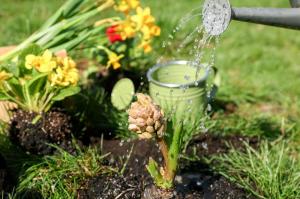Introduction
Hibiscus trees are a popular addition to many gardens in Florida. These beautiful trees produce gorgeous flowers and add a touch of tropical charm to your outdoor space. However, if you're planning to plant a hibiscus tree in Florida, it's important to know where to plant it so that it can thrive and flourish. In this article, we'll guide you through everything you need to know about planting a hibiscus tree in Florida.
Climate and Soil Requirements
Before deciding on where to plant your hibiscus tree, it's important to consider your local climate and soil conditions. Hibiscus trees prefer warm and humid environments with plenty of sunlight. They also require well-draining soil that is nutrient-rich.
If you live in South Florida, your climate is ideal for hibiscus trees. These trees can thrive in USDA Zones 9-11, which encompass much of South and Central Florida. If you live in North Florida, you may have to take extra precautions to protect your hibiscus tree during the winter months.
When it comes to soil, hibiscus trees prefer slightly acidic, well-draining soil with a pH between 6.0 and 7.0. You can improve your soil's drainage by adding organic matter such as compost, mulch, or peat moss. Hibiscus trees also benefit from regular fertilization, so make sure to use a slow-release fertilizer that is specifically formulated for these trees.
Sunlight Requirements
Hibiscus trees require plenty of sunlight to grow and bloom. Ideally, they should receive at least six hours of direct sunlight per day. If you live in an area with hot summers, consider planting your hibiscus tree in a partially shaded area to protect it from intense afternoon sun. If you're planting your hibiscus tree in a container, make sure to place it in a location where it can receive adequate sunlight throughout the day.
Watering Requirements
Hibiscus trees require regular watering to stay healthy and hydrated. Make sure to water your tree deeply each time, allowing the water to soak into the root system. In general, hibiscus trees should be watered once per week, but this may vary depending on your climate and soil conditions.
It's important not to overwater your hibiscus tree, as this can lead to root rot and other issues. To determine if your tree needs water, stick your finger into the soil to a depth of about an inch. If the soil feels dry, it's time to water your tree.
Choosing the Right Location
Now that you know the basic requirements for planting a hibiscus tree in Florida, you're ready to choose the right location for your tree. Here are a few tips to keep in mind:
Choose a location with plenty of sunlight.
Make sure the soil is well-draining and nutrient-rich.
Avoid areas with standing water or poor drainage.
Consider using a raised bed or container if your soil is heavy or compacted.
Plant your hibiscus tree in a location where it can grow freely without obstruction from other trees or structures.
Conclusion
Planting a hibiscus tree in Florida is a great way to add beauty and tropical charm to your outdoor space. By keeping in mind the climate, soil, sunlight, and watering requirements, you can choose the perfect location for your tree and help it thrive and flourish for years to come.

 how many times do yo...
how many times do yo... how many planted tre...
how many planted tre... how many pine trees ...
how many pine trees ... how many pecan trees...
how many pecan trees... how many plants comp...
how many plants comp... how many plants can ...
how many plants can ... how many plants and ...
how many plants and ... how many pepper plan...
how many pepper plan...
































